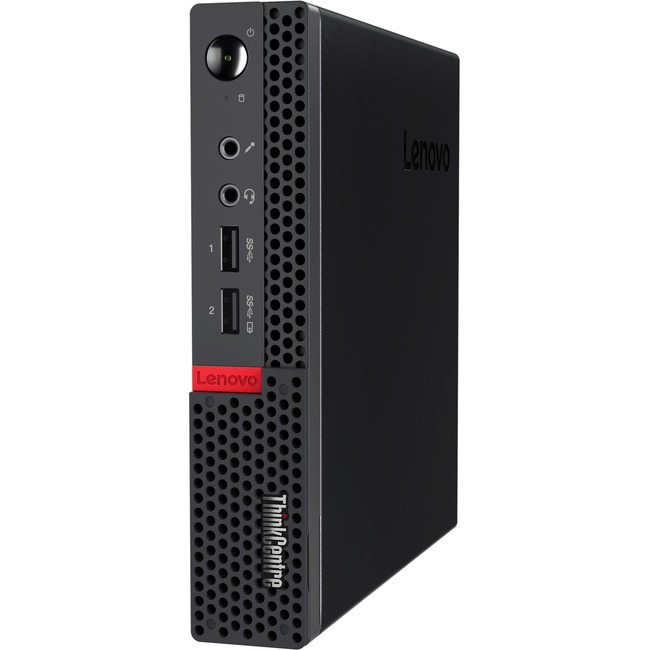Is a Mini PC Powerful Enough for You? Find Out Before You Buy!

As technology gets more advanced, devices are getting smaller and more portable. Mini PCs are a great example of this—packaging the power of a full-sized desktop computer into a tiny package. But is their smaller size a tradeoff for power? In this blog post, we’ll explore whether a mini PC is powerful enough to meet your needs.
You may be wondering: What exactly is a mini PC? A mini desktop, also sometimes called a compact PC, is a complete desktop computer that’s much smaller than a traditional tower. Most mini PCs are around the size of a wireless router—small enough to fit in the palm of your hand.
Let’s break down some key reasons why a mini PC just might be perfect for you.
Processor Performance
One of the main components that determines a computer’s power is the processor. Mini desktop computers use low-power processors from Intel and AMD that are designed for efficiency rather than raw horsepower. However, modern mini PC processors have plenty of grunt for everyday tasks.
For basic uses like web browsing, word processing, email, and media streaming, their processors are more than capable. Even some light photo and video editing or casual gaming is doable on many mini PCs. Of course, if you need serious CPU power for tasks like 3D rendering or video production, a full-sized desktop will have an edge. But for general home and office use, don’t underestimate mini-PC processors.
Graphics Performance
Mini desktops with integrated graphics have come a long way. Modern processors like Intel’s 11th generation Core CPUs and AMD Ryzen chips have very capable built-in graphics that can handle HD/FHD video and light gaming.
- You’ll be able to enjoy streaming video from services like Netflix, YouTube, and more in high definition with no issues. Integrated graphics are more than powerful enough to smoothly playback most video formats.
- Esports and less graphically demanding titles like League of Legends, Overwatch, CS:GO, and indie games will run fine on mini PCs with integrated graphics at lower settings. Don’t expect to max out all the eye candy, but casual gameplay is very doable.
- Heavier 3D games may struggle with higher-quality presets, but lower settings provide a playable experience. Games like Fortnite, Apex Legends, and World of Warcraft can still be fun on mini PCs if you adjust the quality sliders.
- Productivity apps, web browsing, photo editing with light filters and effects, and HD video conferencing are all well within the capabilities of modern integrated graphics. Don’t feel limby in your everyday creative tasks.
- Some mini PCs have optional discrete graphics modules that can boost gaming performance significantly. Look for models with Thunderbolt ports that support external GPU enclosures for more graphics grunt.
- 4K/Ultra HD video playback is hit or miss, depending on the processor. Many 11th-generation Core and Ryzen mini PCs can handle 4K just fine, but older models may stutter.
Don’t expect to do high-end video editing or 3D rendering projects on a mini desktop without compromising quality or being very patient. But light/hobbyist multimedia work is achievable.
Expandability
With their compact size come some tradeoffs in expandability. Mini PCs have limited room for upgrading components later on. RAM is usually soldered directly onto the motherboard rather than in slots. Storage bays are often m.2 rather than full-sized drives. And there’s no room for add-in cards.
However, most mini PCs let you expand storage via USB or an external enclosure. And their wireless connectivity options are often better than desktops. Overall expandability takes a hit, but built-in options still provide flexibility.
Port Selection
Despite their small size, mini desktops still pack plenty of useful ports. You’ll find HDMI and sometimes DisplayPort for video out, as well as USB 3.0/USB-C ports for connecting peripherals and storage. WiFi and Bluetooth are built-in for wireless options. Audio ports let you connect speakers or a headset. Mini PCs may lack some of the legacy ports found on larger PCs, but they include all the essential modern connectivity.
Operating System Support
Mini PCs support all the major operating systems, just like full-sized PCs. Windows, macOS, and Linux—you’ve got options. Many mini PCs even come with the OS pre-installed, so you’re ready to go right out of the box. Dual-booting multiple operating systems is also possible on some models for added flexibility. OS support is not an issue when it comes to mini PCs.
Power Usage
As their name implies, mini PCs are very power-efficient. Their low-power components sip electricity compared to bulkier desktops. Many mini PCs use less than 20 watts of power—about the same as a couple of laptops! Their small size and efficient design mean mini PCs can easily fit into eco-friendly setups. And their sipping power means lower electricity bills too.
Portability
Portability is a huge advantage of mini PCs. At a fraction of the size and weight of a full tower, mini PCs are incredibly portable. You can easily toss one in a bag and take your full computer anywhere. Their small footprint also means that finding space is never an issue. Whether it’s for a home office, dorm room, or traveling, mini desktops are highly portable full computers.
Versatility
As well as their portability, mini-PCs are extremely versatile machines. Use one as a basic home computer, elegant digital signage, smart home controller, media player, or as a secondary PC. Their small size opens up placement options; you can mount a mini PC almost anywhere. And with options like HDMI-out, they double as portable monitors too. Mini PCs fit seamlessly into many digital scenarios thanks to their versatile size and features.
Pricing
You’ll find mini PCs at a variety of price points. Basic entry-level models start at just $100–200. These will handle basic tasks well but may lack the power for intensive use. Mid-range mini desktop computers in the $300–500 range offer a great balance of performance and value. And high-end mini PCs rivaling full-sized PCs can be found for $600-1000. Overall, mini PCs provide excellent value considering their capabilities and small size.
Conclusion
As you can see, mini PCs pack a lot of power into a tiny package. For everyday tasks like productivity, web browsing, streaming, and light gaming, a mini PC has more than enough muscle. Their small size unlocks huge benefits in portability, versatility, and energy efficiency, too. So whether you’re tight on space or want a full computer that’s easy to move around, a mini PC could be a great choice.




